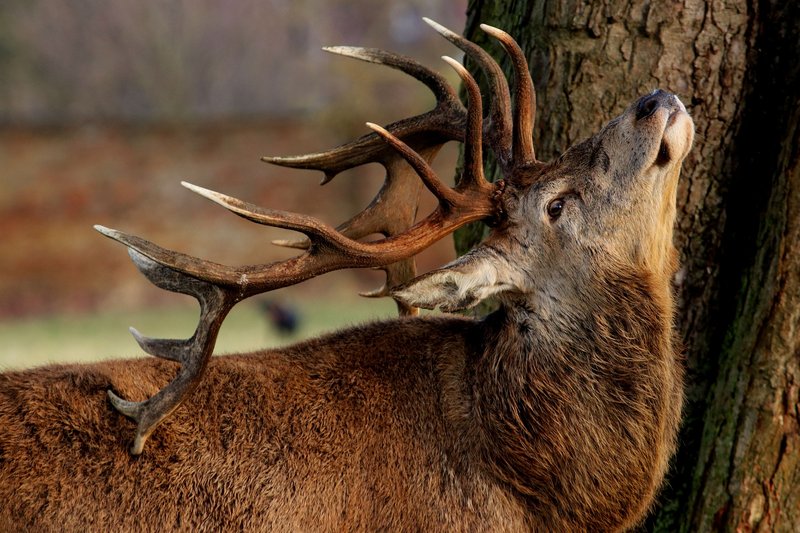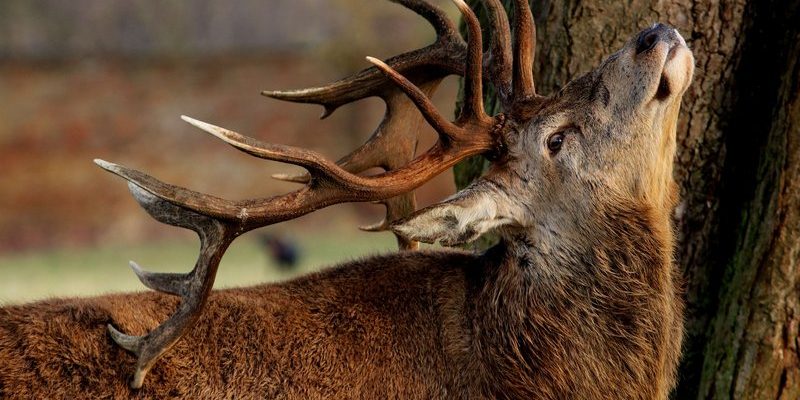
Many people might picture red deer in a quaint, pastoral setting, but they are actually quite adaptable, living in a range of habitats across Europe, Asia, and even parts of North Africa. They’ve carved out a niche in diverse environments, from rolling hills to dense forests. However, misunderstandings about their behavior, habitat, and biology continue to circulate. In this article, we’ll explore these myths, clarify the truth, and celebrate the incredible nature of red deer.
Myth 1: Red Deer Are Just Big Elk
You might hear others refer to red deer as big elk, but that’s not quite right. While they do share some similarities, such as their size and herbivorous diet, they belong to different species. Red deer are part of the Cervidae family, specifically classified as Cervus elaphus, whereas elk are known as Cervus canadensis. Here’s the thing: distinguishing between these animals is crucial for appreciating their unique roles in ecosystems.
One major difference lies in their habitat preferences. Red deer thrive in forested areas and mountainous regions, while elk usually prefer open grasslands or meadows. It’s kind of like comparing apples and oranges; both are fruits, but they each bring something different to the table.
Moreover, red deer tend to have a more slender build, with long legs and a narrower body compared to elk. You might also notice that red deer typically have a reddish-brown coat, which contributes to their name, while elk coat colors can vary significantly. So, next time someone mentions red deer and elk in the same breath, you can confidently step in and share this insight!
Myth 2: Red Deer Are Aggressive and Dangerous
Another common misconception is that red deer are aggressive creatures that pose a serious threat to humans. Honestly, this fear is largely unfounded. While it’s true that male red deer can be territorial, especially during the rutting season when they’re competing for mates, they generally prefer to avoid confrontation.
During the rut, you might see them engage in impressive displays of strength by clashing their antlers. It’s a spectacle to behold but not something that typically involves human interaction. Most of the time, red deer are quite shy. They tend to keep their distance from humans, retreating into forests or other secluded areas when they sense people nearby.
If you happen to spot a red deer in the wild, it’s best to admire them from afar, respecting their space. Just like you wouldn’t approach a wild animal, it’s crucial to appreciate these magnificent creatures without getting too close. After all, they’re just trying to live their lives.
Myth 3: Red Deer Only Live in the Wild
Many people envision red deer frolicking freely in the wild, but that’s only part of the story. While they do reside in various natural habitats, red deer are also found in parks and reserves. In fact, in regions where their populations are managed, they often adapt remarkably well to semi-wild environments.
For instance, in some national parks, red deer have become accustomed to human presence. Here’s a little nugget for you: these park-dwelling deer often become accustomed to visitors, allowing for unique wildlife-watching experiences. However, it’s essential to remember that even in these areas, they still rely on natural food sources and habitats to thrive.
You might be wondering how they adapt to these settings. Well, they typically find shelter in the more secluded parts of parks or reserves, where they can graze and feel safe from human intrusion.
Myth 4: Red Deer Don’t Have Natural Predators
Some folks might think red deer roam freely without any threats, but that’s not the case. In fact, red deer face a variety of natural predators that can impact their populations. Wolves, for instance, are one of the primary predators of red deer, especially in regions where both species coexist. The presence of wolves can significantly influence red deer behavior, pushing them to adapt their movements and habitat choices.
Additionally, large cats, like the lynx or puma, pose a risk to younger or weaker individuals. This predator-prey dynamic is a critical part of the ecosystem, keeping the red deer population in check and maintaining a balance in nature.
Understanding this predator-prey relationship helps us appreciate the complexity of wildlife interactions. So, while it may seem like red deer are at the top of the food chain, they’re not immune to the natural order of things.
Myth 5: All Red Deer Have Antlers
When you think of red deer, you might picture those stunning antlers that males sport during the breeding season. However, it’s a misconception to think that all red deer possess antlers. Female red deer, or hinds, do not have antlers at all. It’s like thinking every member of a family shares the same hairstyle—each individual has its unique characteristics.
Male red deer grow their antlers annually, usually shedding them in the spring after the rut. During their growth phase, you’ll notice they’ve got a fuzzy covering called ‘velvet.’ This covering supplies the developing antlers with nutrients. Once the antlers have fully developed, the velvet is shed, revealing the hard antlers beneath.
Understanding the difference between the genders is vital for recognizing red deer in the wild. So the next time you spot a red deer, take a moment to identify its gender and admire the unique traits of each.
Myth 6: Red Deer Are Only Active During the Day
Lastly, let’s talk about the activity patterns of red deer. Many people assume they are strictly diurnal, meaning they are only active during the day. However, red deer are actually quite flexible and can be active at different times, depending on various factors like food availability and human activity.
In areas with dense human populations, red deer may adjust their schedules, becoming more active during twilight (dawn and dusk) when fewer people are around. This behavior helps them avoid interactions with humans and stay safe. It’s similar to how some folks feel more comfortable going out at night when it’s quieter.
This adaptability helps red deer thrive in various environments, proving they are resilient creatures. So, if you’re hoping to catch a glimpse of these animals, consider heading out either early in the morning or later in the evening for the best chances.
In Conclusion
The world of red deer is filled with rich diversity and vibrant life, yet numerous myths and misconceptions create misunderstandings about these remarkable animals. Remember, red deer are not just big elk—they’re unique creatures with their distinct traits. They’re not aggressive monsters; rather, they’re shy animals navigating their habitats with grace. So next time you hear someone share a myth about red deer, you’ll be equipped with the facts to set the record straight.
Like many aspects of our natural world, red deer teach us valuable lessons about adaptability, resilience, and the importance of respecting wildlife. They’re not just animals to be admired from a distance; they’re part of a larger ecosystem that we should all strive to understand and protect.

